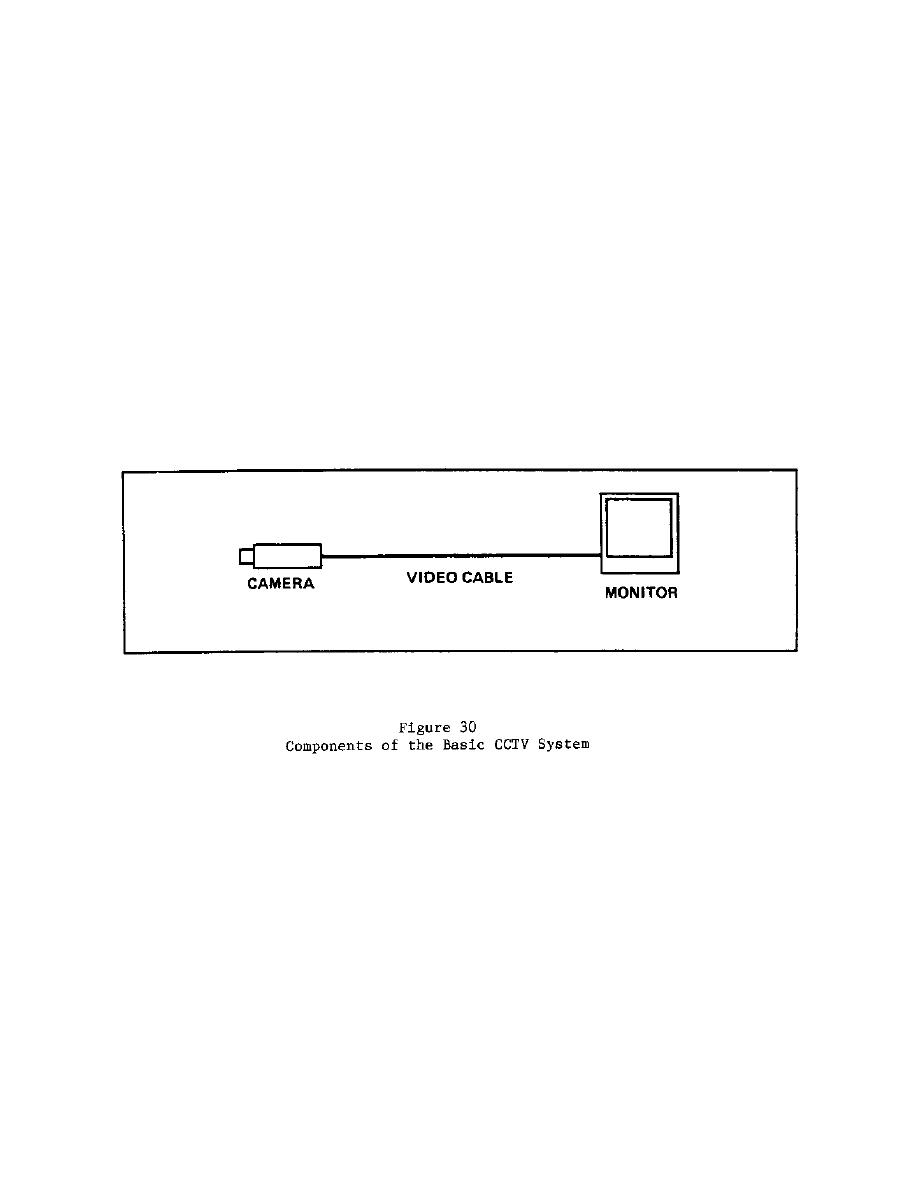

Custom Search
|
|

|
||
 situations (e.g., shift changes). It is sometimes employed as an access
verification device at relatively small areas with low personnel portal
throughputs (e.g., small command posts) as a supplement to other automated
access verification means. It is especially useful when direct surveillance
of the access portal area is not possible by security personnel. The use of
CCTV as a primary access control means is not recommended.
6.2 Components of Basic Closed-Circuit Systems. Figure 30 depicts an
example of the components of a CCTV system. The components include the lens
and camera which "see" the scene, the cable or other transmission media and
associated components over which video data is transmitted, and the monitor
and associated components upon which the video data is displayed. While
Figure 30 depicts the basic components of a CCTV system, most systems are
much more complex. Cable and other video transmission media will be
discussed in Section 7. The remainder of this section will discuss the
remaining components of CCTV systems so that the security system designer
will be able to design an effective CCTV system as part of his overall
security system design.
6.2.1 Cameras. Cameras are the "eyes" of the CCTV system. They are
generally classified by "format" and vidicon tube type (or solid state).
"Format" is the expression used to denote the size (diameter) of the vidicon
tube (or solid state array) in inches. Two formats are generally accepted
for security CCTV applications: 2/3 inch and one inch. Two-third inch
format cameras are generally used for interior applications, while the
one-inch is used for outdoor applications because of the larger image area
possible. One-inch cameras generally cost more than 2/3-inch cameras. This
is not an absolute rule, since 2/3-inch format cameras are sometimes used
cost-effectively outdoors, and one-inch cameras have been used occasionally
13.02-84
|
 |
|
 |
||